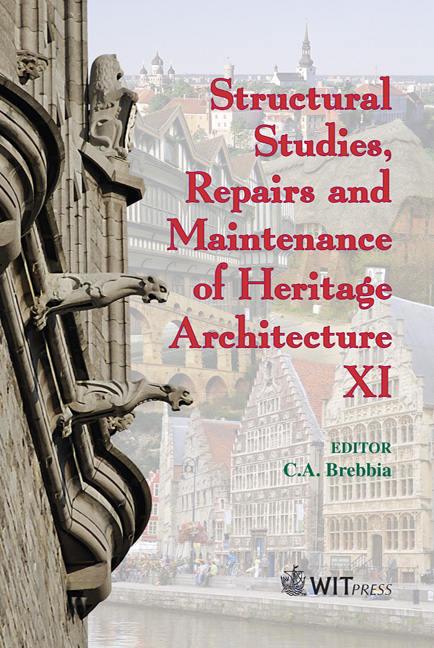Shells In The German Baroque: Geometry Is Technology
Price
Free (open access)
Transaction
Volume
109
Pages
12
Page Range
83 - 94
Published
2009
Size
7,491 kb
Paper DOI
10.2495/STR090081
Copyright
WIT Press
Author(s)
V. Compán, F. Escrig & M. Cámara
Abstract
Shells are forms that base their behaviour in their geometry. From antiquity the art of building has been conceived as the ability to span and grew with little pieces, using bricks and stones, until there were great closed spaces. Arches, vaults and domes work because of their geometrical disposition more than because of their intrinsic strengthening. From their invention, domes have been subjected to a process of optimization that arises slowly to diminish thickness at the same time that it increases covered areas. How the thick Roman Pantheon dome is converted, almost with the same span in a thin skin in the Hagia Sophia, explains with clarity the path from heavy to light buildings. Maybe Saint Vital in Ravenna is the end of this process, not surpassed for twelve centuries by Renaissance nor Ottoman domes. Saint Vital was the culmination of lightness thanks to the use of a special kind of hollow brick. When some architects were impelled to build in the Baroque style with short budgets and pour technological advice, they thought that the solution was to be found in the geometry and not in the materials. Architects such as Borromini, Guarini and Vittone were the masters who taught a new young generation headed by Juvara, Fischer and the Dienzenhofer family. Their proposals for double curved single layer domes were really shells, thinner than ever executed before. Spherical dome caps realised at this time were as thin as twenty centimetres, with or without ribs. Vaults composed of sectors of spheres and cylinders were varied and showed a complexity not seen since the Muslim domes. The complexity of Baroque domes has not be conveniently studied until now, may be because engineers think more in terms of mathematical analysis than in terms of geometrical concepts.
Keywords
historical masonry building, FE modelling, shell behaviour




